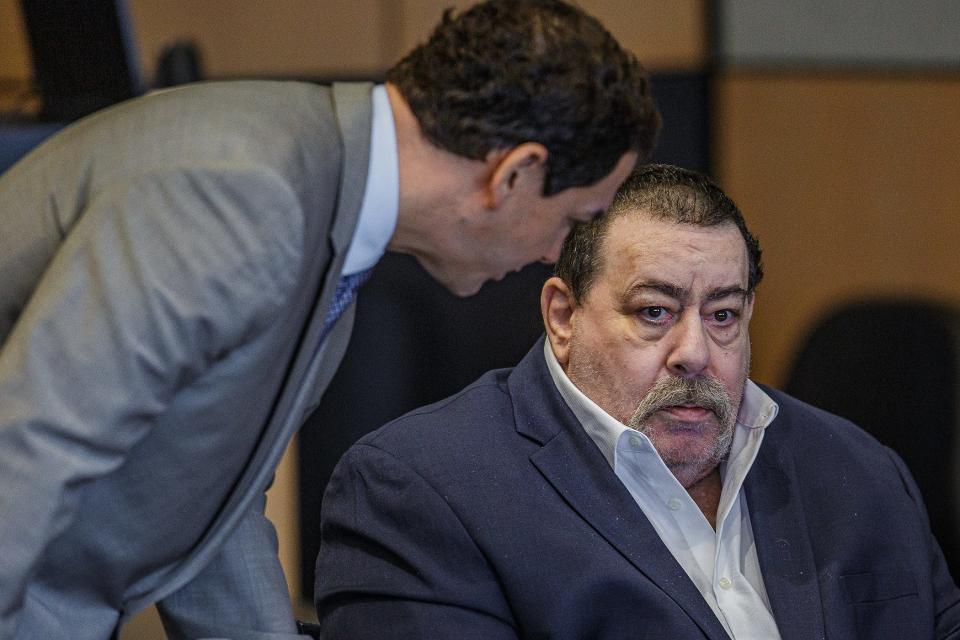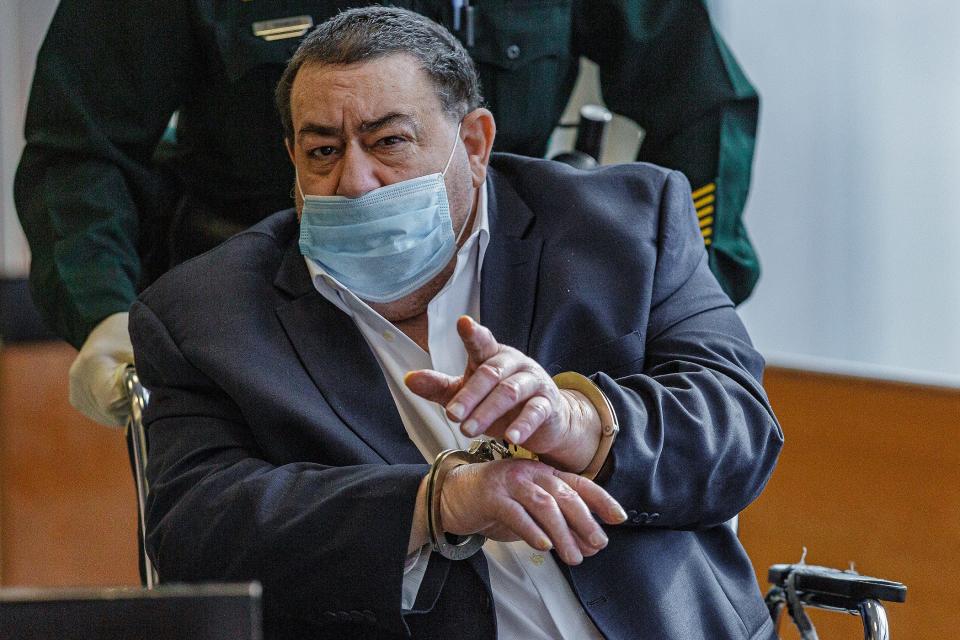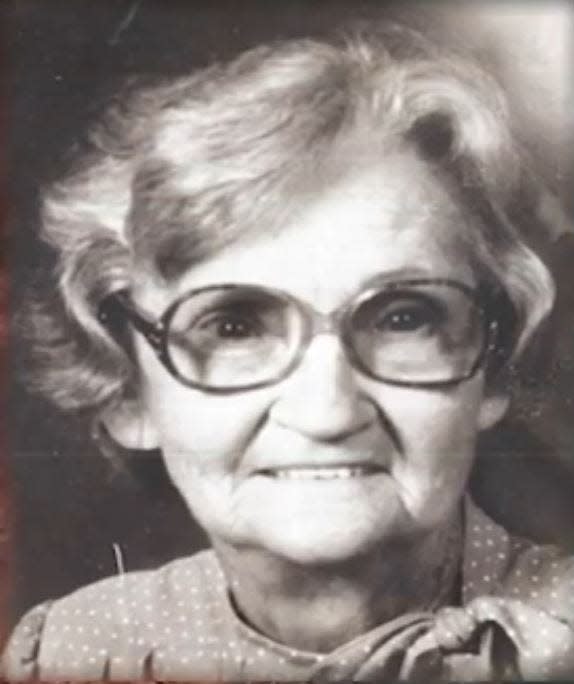Jury convicts Boynton man of murder after decades-old rape kit DNA linked him to the crime
WEST PALM BEACH — Police found 78-year-old Mildred Matheny lying naked and badly beaten on a dead-end dirt road in 1985. She died in the hospital 11 days later — but not before nurses swabbed her body for the perpetrator's DNA.
That genetic sample would become the focal point of a much-contested murder trial in a West Palm Beach courtroom this week. Prosecutors said the sperm preserved in Matheny’s rape kit pointed only to Richard Lange, a 62-year-old Boynton Beach man who was 25 at the time of Matheny’s attack.

While Lange couldn’t be excluded as a likely source of the DNA, his defense attorney argued that neither could any of his close male relatives — none of whom detectives tested for a DNA comparison after identifying Lange as a suspect. That isn’t due diligence, said attorney Scott Skier during his closing argument, nor is it enough to convict a man of murder.
The jury disagreed.
Related: Cold-case North Palm Beach murder trial may hinge on DNA from beer can, actions of a psychic
They found Lange guilty of first-degree murder and sexual battery Wednesday, closing the door on a two-day trial and a 38-year-old cold case. Circuit Judge Daliah Weiss is scheduled to sentence Lange to prison April 4.
The 62-year-old man, who is confined to a wheelchair and sometimes snored during slow parts of the trial, said nothing Wednesday as bailiffs escorted him from the courtroom.

Advancements in DNA technology and detectives' persistence led to break in Mildred Matheny cold case
Police theorized at the time of the murder that Matheny, a bespectacled grandmother suffering from Alzheimer’s disease, may have accepted a ride from a stranger after wandering from her Lake Worth-area home on April 27, 1985. A passerby found her on Old Indiantown Road west of Jupiter, 30 miles from home, moaning and incoherent.
Assistant State Attorney Jo Wilensky told jurors the trauma Matheny endured was so great that nurses at Martin Memorial Hospital in Stuart had to pry her legs apart to conduct a rape kit. From their swabs, detectives created a genetic profile containing a mix of Matheny and her assailant’s DNA.
Celynda Sowards, a forensic scientist with the Palm Beach County Sheriff’s Office, set out to create another, more informative genetic profile from the vaginal swabs in 2021. Most of the swabs' cotton tips had been used up during previous analyses, so she collected some of the DNA from their wooden bases instead.

Uncertainty in degraded DNA once thwarted investigations, but now, crime labs have software to account for those uncertainties. Sowards used a tool like this to isolate the unknown DNA from Matheny’s and create a partial profile, which she uploaded into CODIS, a database of convicted offenders’ DNA.
Charged with a felony in 2006 for carrying a concealed weapon without a license, Lange was among those offenders. A comparison of his DNA profile in CODIS to the one in Matheny's rape kit revealed compelling genetic similarities.
While Sowards and other forensic scientists who testified couldn’t say with 100% certainty that the DNA came from Lange, they said it’s 27 quadrillion — "That's 15 zeros," Wilensky said — times more likely to have come from him than from another unknown, unrelated individual. Prosecutors would cite this stat several times throughout Lange’s trial, but his defense attorney said it’s misleading.
The same likelihood could be true of Lange’s brother or father, Skier said, but because they didn’t exist in the CODIS database, no one knew for sure. Investigators never checked.
“You got a partial hit,” Skier told jurors Wednesday. “Partial, partial, partial. Nobody said identical.”
DNA and policing: How new DNA technology led to Jupiter triple homicide arrests
Jurors sided with prosecutors in debate over Richard Lange's partial DNA match
Tiffany Roy, a forensic analyst who was on call to testify as an expert for the defense, said she encouraged Skier to seek out DNA samples of Lange’s close, living male relatives to demonstrate how genetically similar they could be, and to see whether they could be excluded as potential contributors to the rape kit DNA. Lange’s defense team got in touch with a brother, Roy said, but he declined to offer a DNA sample.
“No case should be built on a single piece of evidence,” she said later. “No matter how powerful and well-regarded the one piece is.”
Wilensky and fellow prosecutor Chritchet Mixon called the defense's argument speculative, reminding the court there was no evidence that any of Lange's relatives were in Florida in 1985. Lange moved from Massachusetts to Boynton Beach in his 20s and worked as a plumber.

Skier, whose soft-spoken delivery had jurors leaning forward in their seats throughout the trial, amped up the volume during his closing argument. He spoke at times through gritted teeth, a finger pointed at the prosecutors he accused of misleading jurors into believing the DNA could only have come from Lange.
“I could whisper it, and I could yell it," Skier said. "It's going to be the same every time: The evidence is insufficient to convict.”
The jury deliberated for about three hours before returning to the courtroom. Skier sat with his fingers pressed to the bridge of his nose as a clerk read the "guilty" verdicts aloud. He closed his eyes.
Hannah Phillips is a journalist covering public safety and criminal justice at The Palm Beach Post. You can reach her at hphillips@pbpost.com.
This article originally appeared on Palm Beach Post: Murder of Mildred Matheny: DNA match secures conviction in 1985 cold case

